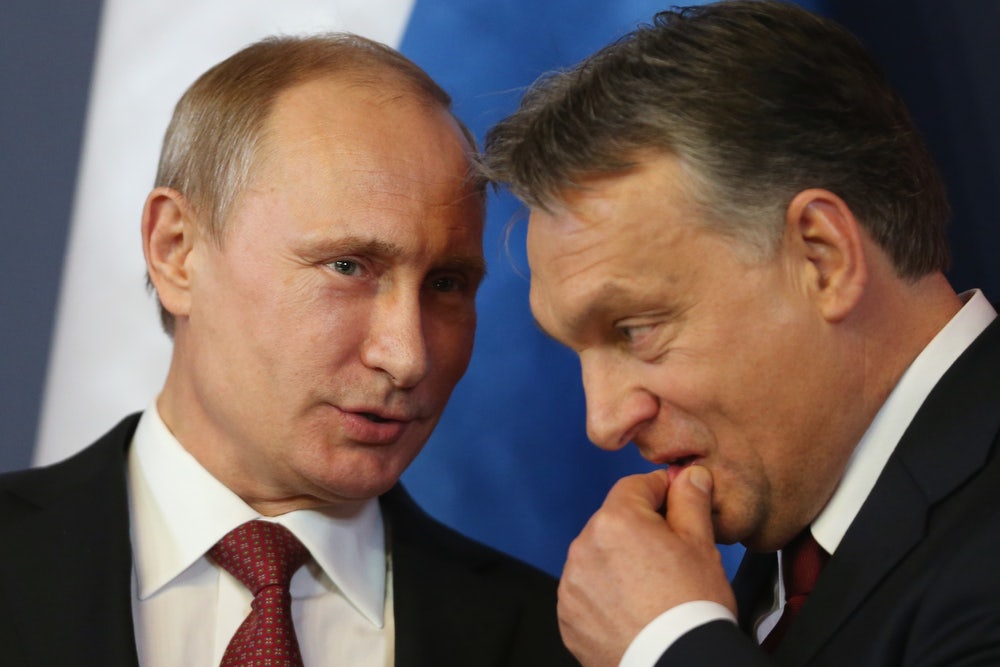The TurkStream gas pipeline being built by Russia to deliver its gas to Turkey and southeastern Europe via the Black Sea may get extended to Hungary, following talks between Hungarian Prime Minister Viktor Orban and Russian President Vladimir Putin on Tuesday.
“It is no secret that Hungary wants the gas pipeline that is going to be built from the south towards Hungary to further cross the country,” Orban said at a joint press conference with Putin. “That would open excellent opportunities for Hungary. I asked Mr. President [Putin] to seriously consider this possibility.”
The two parallel segments comprising TurkStream are expected to pump 31.5 billion cubic meters (bcm) of Russian natural gas from Anapa on Russia’s Black Sea coast to Kiyikoy in Turkey. The pipeline measures 910 kilometers (566 mi). The first segment, or string, has already been completed and is helping to meet Turkey’s energy needs; the second string will service continental Europe.
“Opportunities for including our Hungarian partners in new routes of Russian gas transit to Europe are being considered,” said Putin at the press conference. “I do not rule out that after the Turkish Stream is built, one of the land branches of this gas main could pass through Hungary.”
After Tuesday’s meeting, Orban said that he pleased that natural gas supply cooperation between Russia and Hungary has been experiencing balanced and steady development for past years. The two sides agreed to extend the current arrangement whereby Russia supplies Hungary with gas, until 2020.
In 2017, Russian energy giant Gazprom delivered seven bcm of gas to Hungary, an increase of 21.9 percent against 2016, or 5.7 bcm, according to company data. From January 1 of this year through August, this figure has increased by 8.6 percent and already reached 5.4 billion cubic meters (bcm), which is 60 percent of the current gas consumption in Hungary.
Gazprom, which is backing the pipeline, is also considering options to extend it through Bulgaria and Serbia or through Greece and Italy.
The issue of safe gas transit was on the agenda during the February 2017 meeting between Orban and Putin in Hungary, where the Hungarian prime minister expressed his worries about the transit route through Ukraine amid the growing tension between Kiev and Moscow.
“With regard to gas supplies, we cannot ignore the issue of stability of gas supplies across Ukraine,” Orban said at the time, standing alongside Putin during a joint conference, advocating for the diversification of Russian gas supplies to Europe. “We are aware of a great deal of issues that cause uncertainty, so we have always stood for diversifying our supply lines.”
According to the European Union’s statistical agency Eurostat, more than a half of European energy needs are covered by imports, making Russia – the world’s leading natural gas producer and exporter - a key player in the continent’s energy security.
TurkStream is not the only mega-pipeline in the works. Nord Stream 2 is another pipeline, through the Baltic, that – if built – would double Russia’s gas exports to Germany and deliver 110 bcm of Russian gas. While Germany is anxious to see it completed, geopolitical differences, including with the United States, have hampered its construction.
For years, Russia’s energy policy has been to cause concern in Washington as Russia cozies up to Europe and have it rely on Moscow for its energy – and ultimately economic – security.
“We support our European institutions to lower their dependence on a single supplier,” the U.S. Secretary of Energy Rick Perry said following a meeting with Russian Energy Minister Alexander Novak in Moscow last week. “We oppose Nord Stream 2, which would concentrate two-thirds of the imports of Russian gas in a single [route], creating a choke point [vulnerable to] disruption,” he added.
Perry had expressed the U.S.’ support for the ongoing construction of the Southern Gas Corridor – a large route that will deliver gas from the Caspian Sea to southern Italy through a series of overland and underwater segments. Some speculate the corridor is built to rival Russia, which is left out of the project. But not everyone agrees with that theory.
“All the talk that one project interferes with another are an absolute false,” Vitaly Baylarbayov, the Deputy Vice President of the State Oil Company of Azerbaijan (SOCAR) said recently.







 President Ilham Aliyev shed light on the evolving contours of the peace process with Armenia during an international conference in Baku this week. ...
President Ilham Aliyev shed light on the evolving contours of the peace process with Armenia during an international conference in Baku this week. ...
 Azerbaijan and Armenia started the process of demarcation of their border on Tuesday, with the installation of the first border markers based on ge...
Azerbaijan and Armenia started the process of demarcation of their border on Tuesday, with the installation of the first border markers based on ge...
 Iran has refuted reports of alleged damage to Shimon Peres Negev Nuclear Research Centre located southeast of Dimona, Israel, during the recent air...
Iran has refuted reports of alleged damage to Shimon Peres Negev Nuclear Research Centre located southeast of Dimona, Israel, during the recent air...
 Iran and Pakistan have signed eight cooperation documents in various fields, and agreed to strengthen ties to fight terrorism in the region.
Iran and Pakistan have signed eight cooperation documents in various fields, and agreed to strengthen ties to fight terrorism in the region.



